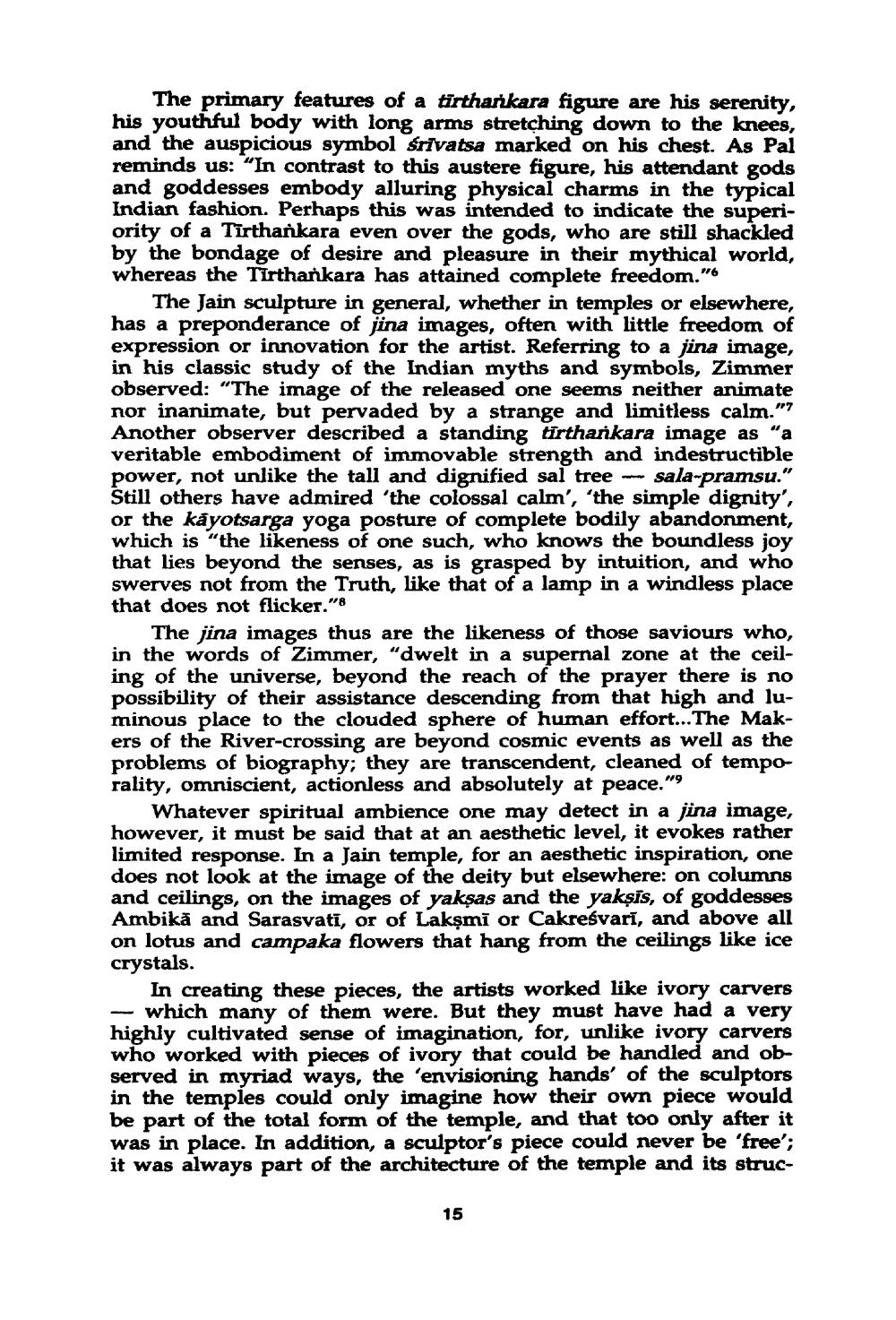________________
The primary features of a tirtharkara figure are his serenity, his youthful body with long arms stretching down to the knees, and the auspicious symbol srivatsa marked on his chest. As Pal reminds us: "In contrast to this austere figure, his attendant gods and goddesses embody alluring physical charms in the typical Indian fashion. Perhaps this was intended to indicate the superiority of a Tīrthankara even over the gods, who are still shackled by the bondage of desire and pleasure in their mythical world, whereas the Tirthankara has attained complete freedom."
The Jain sculpture in general, whether in temples or elsewhere, has a preponderance of jina images, often with little freedom of expression or innovation for the artist. Referring to a jina image, in his classic study of the Indian myths and symbols, Zimmer observed: "The image of the released one seems neither animate nor inanimate, but pervaded by a strange and limitless calm."7 Another observer described a standing tirtharikara image as "a veritable embodiment of immovable strength and indestructible power, not unlike the tall and dignified sal tree -- sala-pramsu." Still others have admired 'the colossal calm', 'the simple dignity', or the kåyotsarga yoga posture of complete bodily abandonment, which is "the likeness of one such, who knows the boundless joy that lies beyond the senses, as is grasped by intuition, and who swerves not from the Truth, like that of a lamp in a windless place that does not flicker."
The jina images thus are the likeness of those saviours who, in the words of Zimmer, "dwelt in a supernal zone at the ceiling of the universe, beyond the reach of the prayer there is no possibility of their assistance descending from that high and luminous place to the clouded sphere of human effort...The Makers of the River-crossing are beyond cosmic events as well as the problems of biography; they are transcendent, cleaned of temporality, omniscient, actionless and absolutely at peace."
Whatever spiritual ambience one may detect in a jina image, however, it must be said that at an aesthetic level, it evokes rather limited response. In a Jain temple, for an aesthetic inspiration, one does not look at the image of the deity but elsewhere: on columns and ceilings, on the images of yakşas and the yaksis, of goddesses Ambikā and Sarasvati, or of Lakşmi or Cakreśvarī, and above all on lotus and campaka flowers that hang from the ceilings like ice crystals.
In creating these pieces, the artists worked like ivory carvers — which many of them were. But they must have had a very highly cultivated sense of imagination, for, unlike ivory carvers who worked with pieces of ivory that could be handled and observed in myriad ways, the 'envisioning hands' of the sculptors in the temples could only imagine how their own piece would be part of the total form of the temple, and that too only after it was in place. In addition, a sculptor's piece could never be 'free'; it was always part of the architecture of the temple and its struc
15




